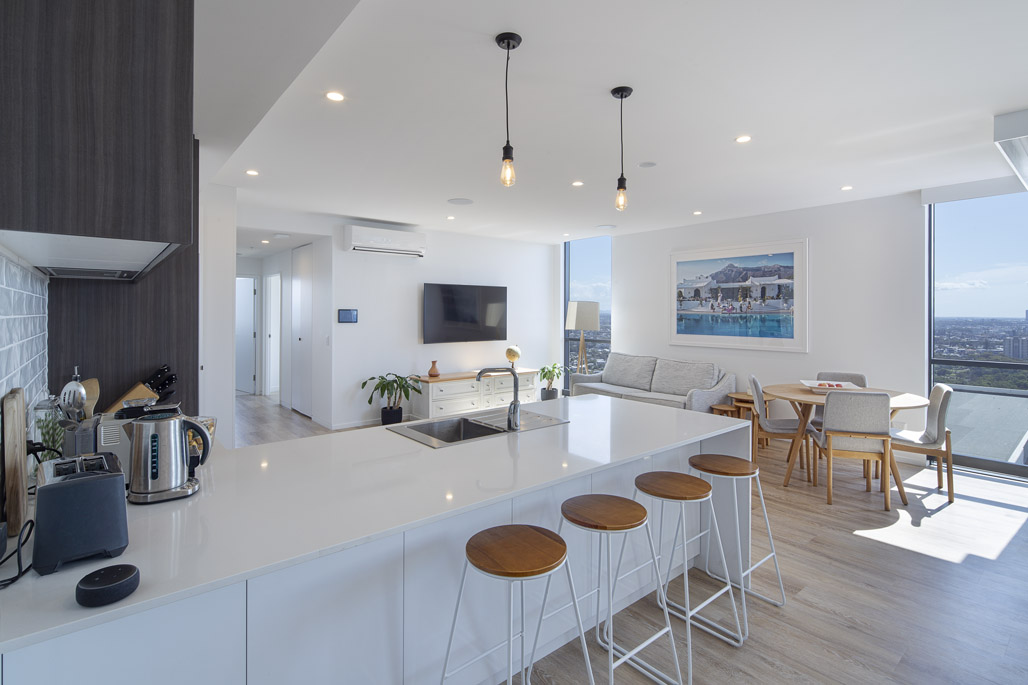All of Accessible Homes Australia’s Specialist Disability Accommodation homes include provisioning for smart home and automated technologies designed to be easily customised to suit the specific support needs of residents. This is for one simple reason: assistive technology is life-changing.
As a c2 ventilated quadriplegic, the assistive technology within my AHA SDA apartment allows me to control my environment by opening doors, closing doors, turning on the lights, adjusting the air conditioning — basically, anything that plugs into a power point can be controlled using assistive tech. I can do this using my voice and also through mobile phone applications which are connected to my wheelchair.
Assistive tech has advanced in leaps and bounds over the last few years and allows me a sense of independence and freedom I’d not experienced before.
Automated doors
One of the main assistive tech elements that have given me more independence is being able to open and close the door. It might sound menial but, as someone who’s in a wheelchair and can’t operate a door traditionally, being able to open and close a door gives a better sense of privacy and safety.
When you’re in a room — and you’re locked in that room, in a sense, because you don’t have the ability to open the door — you have that fear of not being able to get out. I have someone with me most of the time, so having that ability and freedom of choice to be able to go, ‘you know what, I need to get out of this room’ and open the door is important. Whether it’s for fire safety or just privacy, there are a lot of different reasons this assistive tech is essential.
Backup battery power
I’m on life support and ventilated, so another vital piece of assistive technology is the backup battery-powered system I have in my home. It means that when the power goes out, I have a few hours of backup power support. It means that I don’t have to evacuate the building or, in a worst-case scenario, go to the hospital, so that’s another piece of assistive tech that has had a huge impact on my lifestyle and sense of security.
Climate control
The other piece of technology that is life-changing for me is having the ability to change the temperature in my home. For someone with a high-level spinal cord injury, temperature control is vital — I can’t regulate my body temperature. So it’s truly life-saving to be able to say ‘Alexa, set bedroom AC or living AC to a better temperature’. My bedroom and living AC get a regular workout from me heating and cooling, so having the ability to change a simple thing like the air conditioning is a huge change in my life.
Most of the technology is off-the-shelf technology — Alexa, Siri — all those sorts of products that integrate with home automation now are pretty easy to get a hold of. There is a little bit of programming and setup involved but once done it’s pretty smooth sailing.
Assistive tech has been incredible for me and I hope to see it change the lives of other people in our community. Assistive technology is going to be the way of the future: it’s innovative, it’s life-changing, and — from an SDA Provider and NDIS point-of-view — it reduces the scheme costs for care supports. It increases the independence of NDIS participants and changes their life; it’s a win-win for everyone.
I would encourage providers and participants alike to investigate and consider the role of assistive technology in creating modern and optimal SDA homes.
For more information on how assistive technology can help your support needs, please contact the Accessible Homes Australia team at [email protected].
